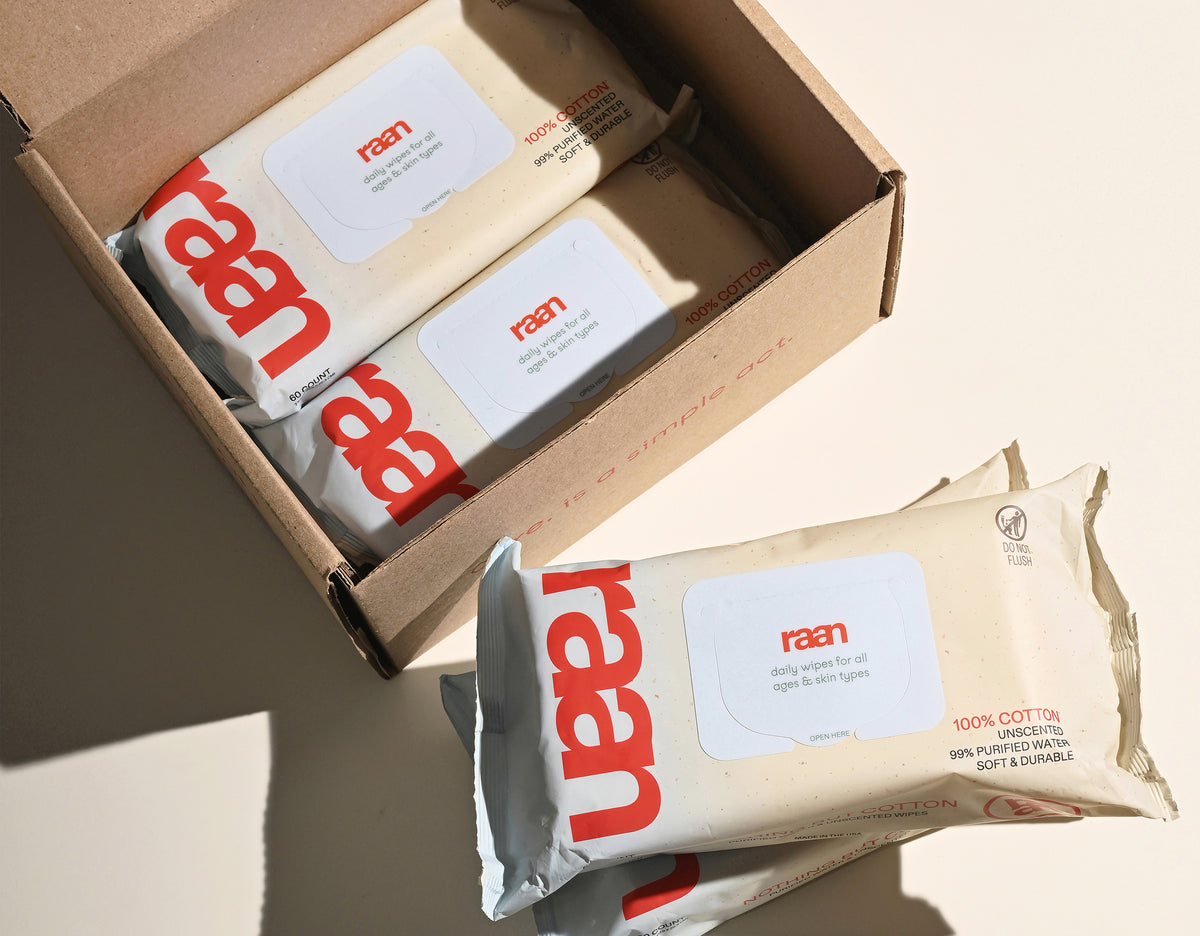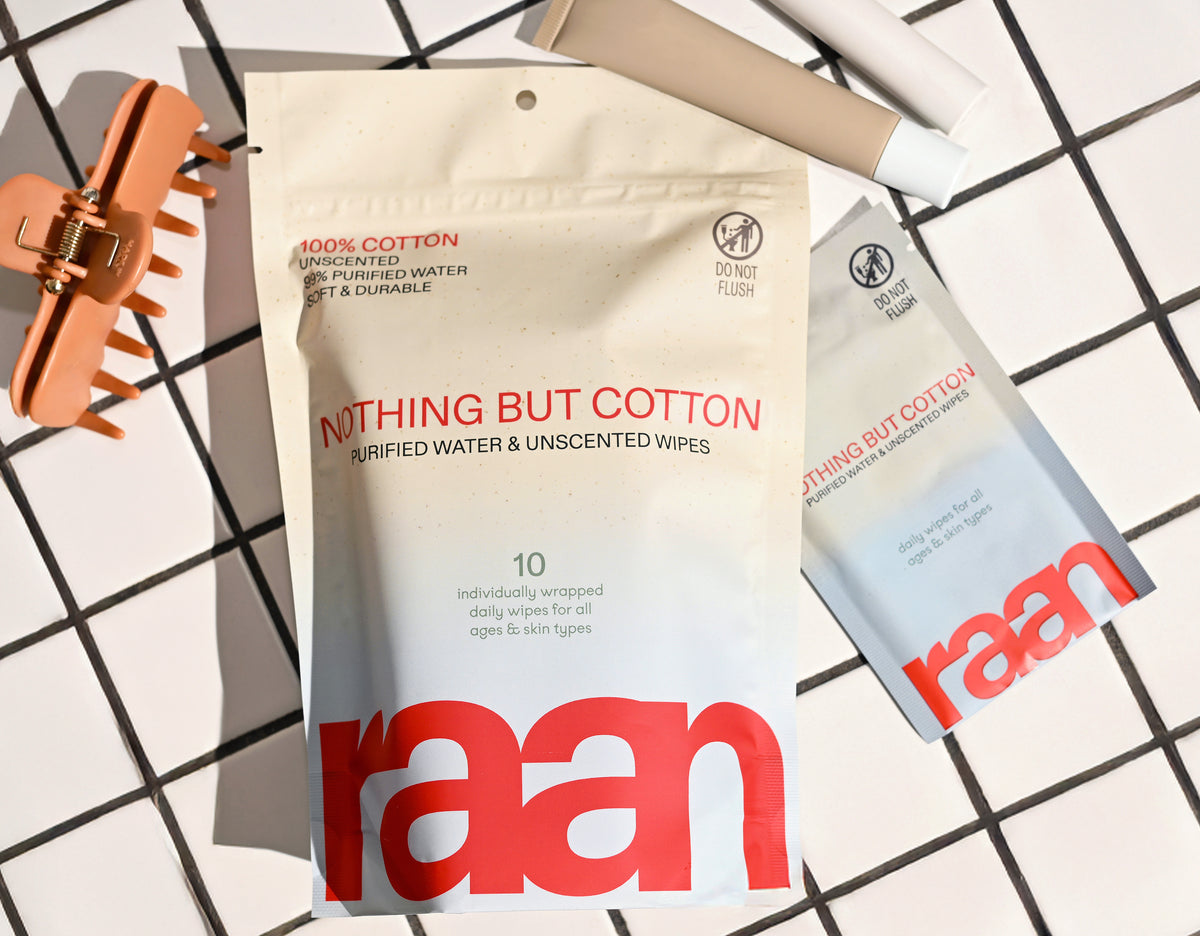Quick Answer
The best sunscreen for sensitive skin is mineral-based with zinc oxide or titanium dioxide as active ingredients. Look for fragrance-free, hypoallergenic formulas with minimal ingredients. Always patch test new products and choose broad-spectrum protection with at least SPF 30.
Key Takeaways
- The best sunscreen for sensitive skin contains mineral-based ingredients like zinc oxide or titanium dioxide.
- Choose fragrance-free and hypoallergenic sunscreens with minimal ingredients to reduce irritation.
- Always perform a patch test before using a new sunscreen product.
- Select sunscreens that offer broad-spectrum protection with at least SPF 30.
Table of Contents
- Why Sunscreen Matters for Sensitive Skin
- The Unique Challenges Sensitive Skin Faces
- What Makes Sensitive Skin Different
- What This Guide Covers
- Chemical vs. Mineral Sunscreen: The Deep Dive
- What Makes a Sunscreen "Sensitive Skin Friendly"
- Key Ingredients to Look For (and Avoid)
- How to Choose and Use Sunscreen for Sensitive Skin
- Problem-Solving Common Sunscreen Issues
- Beyond Sunscreen: Comprehensive Sun Protection
- Building Your Long-Term Sun Protection Routine
Why Sunscreen Matters for Sensitive Skin
If you have sensitive skin, you already know the daily balancing act. You want protection from harmful UV rays, but traditional sunscreens can trigger irritation, redness, or breakouts that leave you wondering if the cure is worse than the problem.
Here's the reality: sensitive skin is actually more vulnerable to sun damage. Your skin barrier is often compromised, making it easier for UV rays to penetrate and cause lasting damage. Without proper protection, you're at higher risk for premature aging, hyperpigmentation, and even skin cancer.
But here's what makes this tricky — many conventional sunscreens contain chemical filters, fragrances, and preservatives that can inflame already-reactive skin. The result? You skip sunscreen altogether or deal with daily irritation, neither of which is a good long-term solution.
The good news: There are sunscreens specifically formulated for sensitive skin that provide excellent protection without the irritation. The key is knowing what to look for and what to avoid.
The Unique Challenges Sensitive Skin Faces

Sensitive skin doesn't just react to sunscreen ingredients — it responds to everything more intensely. Your skin might flush from heat, sting from wind, or break out from products that work fine for others. When it comes to sun protection, this reactivity creates a perfect storm of challenges.
Common triggers include:
- Chemical sunscreen filters like oxybenzone and avobenzone
- Fragrances and essential oils (even "natural" ones)
- Alcohol-based formulas that can dry and irritate
- Thick, occlusive textures that trap heat and sweat
- Preservatives that extend shelf life but can cause contact dermatitis
The sun itself compounds these issues. UV exposure increases inflammation, weakens your skin barrier, and can trigger flare-ups of conditions like rosacea or eczema. Heat from sun exposure also makes your skin more reactive to topical products.
What Makes Sensitive Skin Different
Understanding your skin type is the first step to finding the right sunscreen. Sensitive skin isn't just "difficult" — it's a distinct skin type with specific characteristics that affect how it responds to ingredients and environmental factors.
Sensitive skin typically shows these signs:
- Frequent redness or flushing
- Stinging or burning sensation from products
- Dryness or flaking, especially after using new products
- Visible reactions to weather changes
- Tendency to develop rashes or hives
It's important to distinguish sensitive skin from other reactive skin types. Acne-prone skin might break out from heavy formulas but not necessarily sting from active ingredients. Eczema-prone skin tends to be dry and flaky but may tolerate some ingredients that sensitive skin cannot. Rosacea-prone skin shows persistent redness and may react to heat and certain ingredients, but the triggers can be different from general sensitive skin.
Your skin might fall into multiple categories, which is why finding the right sunscreen can feel overwhelming. The key is identifying your specific triggers and choosing products that avoid them while still providing effective protection.
What This Guide Covers

We're breaking down everything you need to know about sunscreen for sensitive skin into practical, actionable steps. You'll learn the science behind why certain ingredients work better for reactive skin, how to read labels like a pro, and most importantly — how to choose a sunscreen that actually works for your unique needs.
This isn't about finding the "perfect" product (spoiler: it doesn't exist). It's about understanding your skin well enough to make informed choices and having backup plans when your first choice doesn't work out.
We'll cover the mineral versus chemical sunscreen debate, decode ingredient lists, and give you a clear framework for testing new products safely. By the end, you'll have the confidence to protect your skin without the guesswork — and without the irritation.
Chemical vs. Mineral Sunscreen: The Deep Dive
Understanding the difference between chemical and mineral sunscreens is crucial when you have sensitive skin. These two types work completely differently on your skin, and that difference can mean the distinction between comfortable protection and daily irritation.
Quick distinction: Mineral sunscreens sit on top of your skin and reflect UV rays away. Chemical sunscreens absorb into your skin and convert UV rays into heat before releasing them.
For sunscreen sensitive skin, this mechanism matters more than you might think. When chemical sunscreens convert UV rays into heat, that heat is released directly from your skin. If you already have reactive skin, this additional heat can trigger flushing, irritation, or flare-ups of conditions like rosacea.
| Feature | Mineral Sunscreen | Chemical Sunscreen |
|---|---|---|
| How it Works | Reflects and blocks UV rays at skin's surface | Absorbs UV rays, converts to heat, then releases |
| Active Ingredients | Zinc oxide, titanium dioxide | Oxybenzone, avobenzone, octocrylene, homosalate |
| Protection Timeline | Immediate upon application | Requires 15-30 minutes to absorb and activate |
| Texture & Appearance | Thicker consistency, may leave white cast | Lightweight, invisible on all skin tones |
| Sensitive Skin Profile | Rarely causes irritation; ideal for reactive skin | Higher risk of allergic reactions and irritation |
Why Mineral Sunscreen Usually Wins for Sensitive Skin
Mineral sunscreens use only two active ingredients: zinc oxide and titanium dioxide. Both are considered physical blockers that have been used safely for decades. They're inert, meaning they don't react chemically with your skin or break down in sunlight.
This stability is exactly what sensitive skin needs. There's no chemical reaction happening on your skin, no heat generation, and minimal risk of allergic reactions. Zinc oxide, in particular, actually has anti-inflammatory properties that can help calm irritated skin while providing protection.
The main downside? The dreaded white cast. Modern formulations have largely solved this problem with micronized particles that blend better, but you might still notice a slight tint on deeper skin tones.
When Chemical Sunscreen Might Work
Not everyone with sensitive skin will react to chemical sunscreens. If your sensitivity is primarily to fragrances, dyes, or preservatives rather than active ingredients, you might tolerate a well-formulated chemical sunscreen.
Look for chemical sunscreens that use newer-generation filters like avobenzone or octinoxate instead of older ones like oxybenzone. These tend to be less irritating and don't penetrate as deeply into the skin.
The key is patch testing and starting with fragrance-free, hypoallergenic formulas designed specifically for sensitive skin.
What Makes a Sunscreen "Sensitive Skin Friendly"

Marketing terms like "gentle" and "for sensitive skin" are everywhere, but they don't guarantee a product will work for your specific triggers. Here's what actually matters when choosing sunscreen good for sensitive skin.
Hypoallergenic and Fragrance-Free Essentials
Fragrance is the number one cause of allergic reactions in skincare products. This includes both synthetic fragrances and "natural" essential oils that brands add for scent. Even products labeled "unscented" can contain masking fragrances to hide the smell of other ingredients.
Look for products specifically labeled "fragrance-free" rather than "unscented." True fragrance-free formulas contain no added scents whatsoever.
Hypoallergenic means the product is less likely to cause allergic reactions, but it's not a regulated term. The most reliable hypoallergenic sunscreens are those that have been patch-tested on sensitive skin and contain minimal ingredients.
Non-Comedogenic Prevents Breakouts
Non-comedogenic sunscreens won't clog your pores, which is crucial if your sensitive skin is also acne-prone. Heavy, occlusive formulas can trap sweat and bacteria, leading to breakouts that further irritate already-reactive skin.
The best sensitive skin sunscreen options are lightweight enough for daily wear but still provide adequate protection. Look for gel-based or fluid formulas if you're prone to both sensitivity and breakouts.
The Minimal Ingredient Philosophy
More ingredients mean more potential triggers. The most gentle sunscreens for sensitive skin typically have shorter ingredient lists focused on proven, well-tolerated components.
A good rule of thumb: if you can't pronounce or recognize most of the ingredients, it's probably not the best choice for reactive skin. Stick to formulas where you understand what each ingredient does and why it's there.
Pros of Minimal Ingredient Sunscreens
- Fewer potential irritants and allergens
- Easier to identify problem ingredients if reactions occur
- Often more affordable due to simpler formulations
- Less likely to interact with other skincare products
Cons of Minimal Ingredient Sunscreens
- May lack additional benefits like moisturizing or anti-aging
- Limited texture options compared to complex formulas
- Might require separate moisturizer for adequate hydration
- May not address multiple skin concerns simultaneously
Key Ingredients to Look For (and Avoid)
When shopping for extremely sensitive skin sunscreen, your ingredient knowledge becomes your best defense against irritation. Here's your essential guide to what helps and what hurts reactive skin.
Beneficial Ingredients for Sensitive Skin
Beyond the mineral actives zinc oxide and titanium dioxide, several supporting ingredients can actually improve how your sensitive skin tolerates sunscreen:
- Ceramides - Help restore and maintain your skin barrier
- Niacinamide - Reduces inflammation and redness
- Hyaluronic acid - Provides hydration without heaviness
- Aloe vera - Soothes irritation and provides cooling relief
- Centella asiatica - Anti-inflammatory botanical that calms reactive skin
- Vitamin E - Antioxidant protection that supports skin healing
These ingredients work synergistically with mineral sunscreens to provide protection while actively supporting your skin's health and comfort.
Ingredients to Avoid Completely
Certain ingredients are notorious for triggering reactions in sensitive skin. Avoiding these can prevent most sunscreen-related irritation:
- Oxybenzone - High allergic reaction rate, hormone disruption concerns
- Fragrances and essential oils - Leading cause of contact dermatitis
- Denatured alcohol - Drying and irritating, especially in higher concentrations
- Parabens - Preservatives that can cause allergic reactions in sensitive individuals
- Synthetic dyes - Unnecessary additives that increase irritation risk
- Retinyl palmitate - Vitamin A derivative that can increase sun sensitivity
Reading ingredient lists becomes second nature when you know what to avoid. When in doubt, choose products with fewer than 10 total ingredients and stick to brands that specialize in sunscreen for very sensitive skin.
How to Choose and Use Sunscreen for Sensitive Skin
Finding the right sunscreen for very sensitive skin requires more than just reading labels—it demands a strategic approach to testing, application, and daily use. Here's how to navigate the process without triggering irritation.
Patch Testing: Your First Line of Defense
Before applying any new sunscreen to your face, patch testing can save you from days of irritation. Apply a small amount to the inside of your wrist or behind your ear, then wait 24-48 hours to see if any reaction develops.
For extremely sensitive skin sunscreen testing, extend this to 72 hours. Some reactions take longer to appear, especially if you have conditions like eczema or rosacea that can flare up gradually.
Pro tip: Test sunscreen during a time when you won't be in direct sunlight. This helps you distinguish between product irritation and sun sensitivity reactions.
Proper Application for Maximum Protection
Sensitive skin requires gentle but thorough application. Use about 1/4 teaspoon for your face and neck—less coverage means less protection, regardless of the SPF number on the bottle.
Apply sunscreen to clean, dry skin as the final step in your morning routine. If you're using a moisturizer underneath, wait 2-3 minutes between products to prevent pilling or reduced effectiveness.
- Apply 15-30 minutes before sun exposure for chemical sunscreens
- Mineral sunscreens work immediately upon application
- Reapply every 2 hours, or after swimming or sweating
- Use gentle, upward strokes to avoid tugging sensitive skin
- Don't forget often-missed spots: ears, hairline, and neck
Layering with Other Skincare Products
When you have sensitive skin, the order of product application matters more than you might think. Layering incompatible products can cause reactions even when each individual product is gentle.
Start with the thinnest consistency and work toward the thickest. For most routines, this means: cleanser, treatment serums, moisturizer, then sunscreen. Wait a few minutes between each layer to allow proper absorption.
Avoid mixing sunscreen with other products in your palm before applying. This can dilute the protection and create unpredictable chemical interactions that might irritate your skin.
Problem-Solving Common Sunscreen Issues
Even with careful selection, you might encounter challenges when using sunscreen sensitive skin formulas. Here's how to address the most common problems without giving up on sun protection.
When Sunscreen Stings or Burns
Immediate stinging upon application usually indicates a reaction to specific ingredients or compromised skin barrier function. Remove the product immediately with a gentle cleanser and cool water.
If stinging persists after removal, apply a cool compress and avoid any active ingredients (like retinoids or acids) for 24-48 hours. Once your skin calms down, examine the ingredient list to identify potential triggers.
Common culprits include denatured alcohol, fragrances, and certain chemical UV filters. Switch to a mineral-only formula with fewer than 10 total ingredients for your next attempt.
Managing Breakouts from Sunscreen
Sunscreen-induced breakouts typically appear as small, uniform bumps rather than the varied sizes of hormonal acne. This usually indicates clogged pores from heavy or comedogenic ingredients.
Look for gel-based or fluid mineral sunscreens labeled "non-comedogenic." These provide protection without the heavy, occlusive feel that can trap sweat and bacteria.
If you're prone to both sensitivity and acne, consider using different sunscreens for face and body. A lightweight facial formula paired with a more protective body sunscreen can address both concerns effectively.
What to Try When All Sunscreens Fail
If you've tried multiple sensitive skin sunscreen options without success, the issue might be timing, application method, or underlying skin conditions that need addressing first.
Consider consulting a dermatologist to rule out conditions like contact dermatitis or photoallergic reactions. Sometimes what seems like sunscreen sensitivity is actually a reaction to other products or environmental factors.
In the meantime, focus on physical sun protection: wide-brimmed hats, UPF clothing, and seeking shade during peak UV hours (10 AM to 4 PM). These methods provide reliable protection while you work on finding a suitable sunscreen.
Beyond Sunscreen: Comprehensive Sun Protection
For people with extremely reactive skin, sunscreen is just one part of an effective sun protection strategy. Combining multiple approaches often provides better protection with less potential for irritation.
Physical Barriers and Protective Clothing
UPF (Ultraviolet Protection Factor) clothing offers consistent protection without the need for reapplication or potential skin reactions. Look for garments rated UPF 30 or higher for adequate protection.
Tightly woven fabrics in darker colors generally provide better protection than loose weaves and light colors. However, comfort matters too—choose breathable options you'll actually want to wear.
Wide-brimmed hats (at least 4 inches all around) protect your face, neck, and ears—areas where sunscreen application can be tricky for sensitive skin. Look for hats with UPF ratings for guaranteed protection.
Smart Timing and Environmental Strategies
UV rays are strongest between 10 AM and 4 PM. Planning outdoor activities for early morning or late afternoon can significantly reduce your sun exposure while allowing you to use lighter sunscreen protection.
Seek shade whenever possible, but remember that sand, water, and snow can reflect UV rays, increasing your exposure even in shaded areas. This is when a gentle, mineral sunscreen becomes essential even for brief outdoor time.
Building Your Long-Term Sun Protection Routine
Success with sunscreen for sensitive skin comes from consistency and patience. Start with the gentlest possible approach and gradually build your routine as your skin adapts.
Begin with short periods of sunscreen wear—even 30 minutes can help you assess tolerance. Gradually increase wear time as your skin becomes accustomed to the product. This approach helps prevent overwhelming reactive skin while building confidence in your sun protection routine.
Remember that your skin's sensitivity can change with seasons, hormones, and life circumstances. What works perfectly in winter might feel too heavy in summer humidity. Having backup options and staying flexible with your routine prevents sun protection gaps when your usual products don't feel right.
The goal isn't perfection—it's consistent, comfortable protection that you can maintain long-term. With the right approach, even the most sensitive skin can enjoy safe sun exposure without compromising comfort or skin health.
For more in-depth information on sunscreen ingredients and their effects on sensitive skin, you can refer to this authoritative resource on topical sunscreen agents.
If you need to remove sunscreen residue or soothe your skin after sun exposure, consider using Nothing But Cotton Wipes, Unscented for a gentle, fragrance-free cleanse. For on-the-go convenience, Nothing But Cotton Wipes, Unscented, Individually Wrapped are a great choice for sensitive skin.
For a comprehensive list of recommended products, check out this guide to the best sunscreens for sensitive skin from HealthCentral.
Frequently Asked Questions
Which sunscreen is best for sensitive skin?
The best sunscreen for sensitive skin is one that uses mineral-based ingredients like zinc oxide or titanium dioxide, which are less likely to irritate or clog pores. Look for formulas that are fragrance-free, hypoallergenic, and contain minimal, EWG-verified ingredients to reduce the risk of reactions while providing effective broad-spectrum protection.
What sunscreen won't give me an allergic reaction?
Sunscreens that avoid synthetic fragrances, chemical UV filters, and preservatives known to cause sensitivities are less likely to trigger allergic reactions. Choosing a product with a short, transparent ingredient list featuring mineral blockers and food-grade preservatives can help you stay clear of irritants while keeping your skin safe under the sun.
Is SPF 50 too much for sensitive skin?
SPF 50 is not inherently too much for sensitive skin; it offers higher protection against UVB rays, which is beneficial especially if you spend extended time outdoors. The key is selecting a gentle, mineral-based formula without harsh additives rather than worrying about the SPF number itself.
What is the best sunscreen for sensitive skin and eczema?
For sensitive skin with eczema, a sunscreen with mineral blockers like zinc oxide, free of fragrances, dyes, and harsh preservatives, is best. Products with minimal, EWG-verified ingredients that support the skin’s barrier without irritation provide protection while respecting eczema-prone skin’s unique needs.
Is SPF 30 or 50 better for sensitive skin?
Both SPF 30 and SPF 50 can be suitable for sensitive skin when formulated with gentle, mineral-based ingredients. SPF 50 offers more UVB protection, which can be helpful for sensitive skin, but the priority should be on how clean and simple the formula is rather than the SPF number alone.
What sunscreen do dermatologists recommend?
Dermatologists often recommend sunscreens that provide broad-spectrum protection using mineral ingredients like zinc oxide or titanium dioxide, especially for sensitive skin. They emphasize choosing products that are fragrance-free, non-comedogenic, and formulated with minimal, well-studied ingredients to reduce the risk of irritation.






